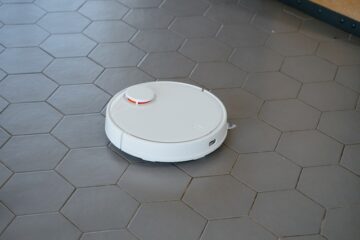Are you looking for the best way to keep your PC cool? If so, you’ve likely come across the term “AIO cooler.” An AIO cooler is a type of liquid cooling system designed to keep your components at a regulated temperature. In this guide, we’ll discuss AIO coolers in-depth and provide you with the tools to find the perfect one for your PC.
What is an AIO cooler?
An AIO cooler is an all-in-one liquid cooling solution which utilizes a radiator and pump to cool your CPU and other components. AIO coolers are designed to be more efficient and quieter than traditional air-cooled systems. They are typically composed of three parts: a radiator, a fan, and a water block. The water block is attached to the processor and draws heat away from the processor, the fan cools the radiator, and the radiator dissipates the heat from the water block.
The main benefit of an AIO cooler is that it is much quieter than a traditional air-cooled system. Air-cooled systems require a fan to move air around the components and can be quite loud. An AIO cooler, on the other hand, is nearly silent and will keep your PC running cool and quiet.
Benefits of an AIO cooler
The use of an AIO cooler has many advantages. The most obvious benefit is that they are quieter than air-cooled systems. An AIO cooler also offers more efficient cooling. The radiator and fan are designed to dissipate the heat away from the components quickly and efficiently, which helps to keep your PC running at optimal temperatures.
Addition
AIO coolers are also more efficient than traditional air-cooled systems. This is because the liquid used in the cooling system has a higher thermal conductivity than air, which helps to transfer the heat away from the components more quickly.
Finally
An AIO cooler is also more reliable than a traditional air-cooled system. This is because the liquid coolant used in the system is more resistant to the buildup of dust and debris, which can cause traditional air-cooled systems to fail.
Considerations when choosing an AIO cooler
When choosing an AIO cooler, there are a few important considerations to keep in mind. The radiator’s size comes first. AIO coolers come in a variety of sizes, from 120mm to 360mm, so you’ll need to make sure you choose a radiator that will fit in your case.
Another important consideration is the fan speed. AIO coolers typically come with two or three fans, and the speed of these fans can have a big impact on the cooling performance of the system. Make sure to select a fan speed that will be sufficient for your needs.
Finally
it’s important to consider the pump speed. The pump is responsible for circulating the liquid coolant and is an important factor in the overall cooling performance of the system. Select a pump speed that will be sufficient for your needs.
Types of AIO coolers
AIO coolers come in a variety of types and sizes, from 120mm to 360mm. The most common type of AIO cooler is the single-fan AIO cooler. These coolers are typically the smallest and most affordable type of AIO cooler, and are designed for smaller cases.
The next type of AIO cooler is the dual-fan AIO cooler. These coolers are larger than single-fan AIO coolers and are designed for medium-sized cases. They typically have two fans and offer increased cooling performance compared to single-fan AIO coolers.
Finally
there are triple-fan AIO coolers. These coolers are the largest and most powerful type of AIO cooler. They are designed for larger cases and offer the highest level of cooling performance.
How to install an AIO cooler
Installing an AIO cooler is relatively straightforward and can usually be done in just a few simple steps. The first step is to install the radiator. Most AIO coolers come with a mounting bracket that will allow you to mount the radiator in the case. Once the radiator is secure, you can then attach the fan and pump to the radiator.
The next step is to attach the water block to the processor. Make sure to use thermal paste to ensure the best possible contact between the water block and the processor. Once the water block is attached, you can then attach the tubing to the water block and the pump.
Finally
You can then attach the fan to the radiator. Make sure to use the included screws to ensure the fan is secure. Once the fan is attached, you can then plug the fan into your motherboard and power it on.
Comparing AIO coolers
When comparing AIO coolers, there are a few important factors to consider. The most important factor is the size of the radiator. As we discussed earlier, AIO coolers come in a variety of sizes, from 120mm to 360mm. If you have a smaller case, you’ll want to opt for a smaller radiator. If you have a larger case, you’ll want to opt for a larger radiator.
Another important factor is the fan speed. As we discussed earlier, AIO coolers typically come with two or three fans. The fan speed is an important factor in the cooling performance of the system, so make sure to select a fan speed that will be sufficient for your needs.
Finally
It’s important to consider the pump speed. The pump is responsible for circulating the coolant and is an important factor in the cooling performance of the system. Make sure to select a pump speed that will be sufficient for your needs.
Best AIO coolers
When it comes to finding the best AIO cooler, there are a few options that stand out. The first is the NZXT Kraken X73. This 280mm AIO cooler offers great cooling performance and is designed with an RGB-lit pump and infinity mirror.
Another great option is the Corsair H115i PRO. This 280mm AIO cooler offers great cooling performance and features a customizable RGB lighting system and a zero-RPM mode for near-silent operation.
Finally
The Cooler Master MasterLiquid ML240L RGB is another great option. This 240mm AIO cooler offers excellent cooling performance and is designed with an RGB lighting system and a low-noise pump.
Troubleshooting tips for AIO coolers
If you’re having trouble with your AIO cooler, there are a few troubleshooting tips you can try. The first is to make sure the fan is running. If the fan isn’t running, you can try unplugging the fan and plugging it back in. If the fan still isn’t running, you can try replacing the fan.
Another possible issue is that the pump isn’t running. If the pump isn’t running, you can try unplugging the pump and plugging it back in. If the pump still isn’t running, you can try replacing the pump.
Finally
If you’re having trouble with the cooling performance, make sure the fan speed is set to the optimal setting. If the fan speed is too low, the cooling performance of the system will suffer.
Benefits of liquid cooling
- In addition to the benefits of an AIO cooler, there are also a few benefits to using liquid cooling. The first is that liquid cooling outperforms air cooling in terms of efficiency. This is because the liquid used in the cooling system has a higher thermal conductivity than air, which helps to transfer the heat away from the components more quickly.
- Another benefit of liquid cooling is that it is quieter than air cooling. Liquid cooling systems don’t require a fan to move air around the components, so they are much quieter than traditional air-cooled systems.
Finally
Liquid cooling is more reliable than air cooling. This is because the liquid coolant used in the system is more resistant to the buildup of dust and debris, which can cause traditional air-cooled systems to fail.
Conclusion
In conclusion, an AIO cooler is a great way to keep your PC cool and quiet. An AIO cooler is more efficient and quieter than a traditional air-cooled system, and offers a variety of benefits. When choosing an AIO cooler, it’s important to consider the size, fan speed, and pump speed, and make sure to select a cooler that will be sufficient for your needs.
Additionally
There are a few troubleshooting tips to keep in mind if you’re having trouble with your AIO cooler. Finally, liquid cooling offers a number of benefits, such as increased efficiency and reliability.
So, if you’re looking for the perfect AIO cooler for your PC, this guide should give you the tools to make an informed decision. Keep in mind the considerations outlined in this guide and you’ll be well on your way to finding the perfect AIO cooler for your PC.



